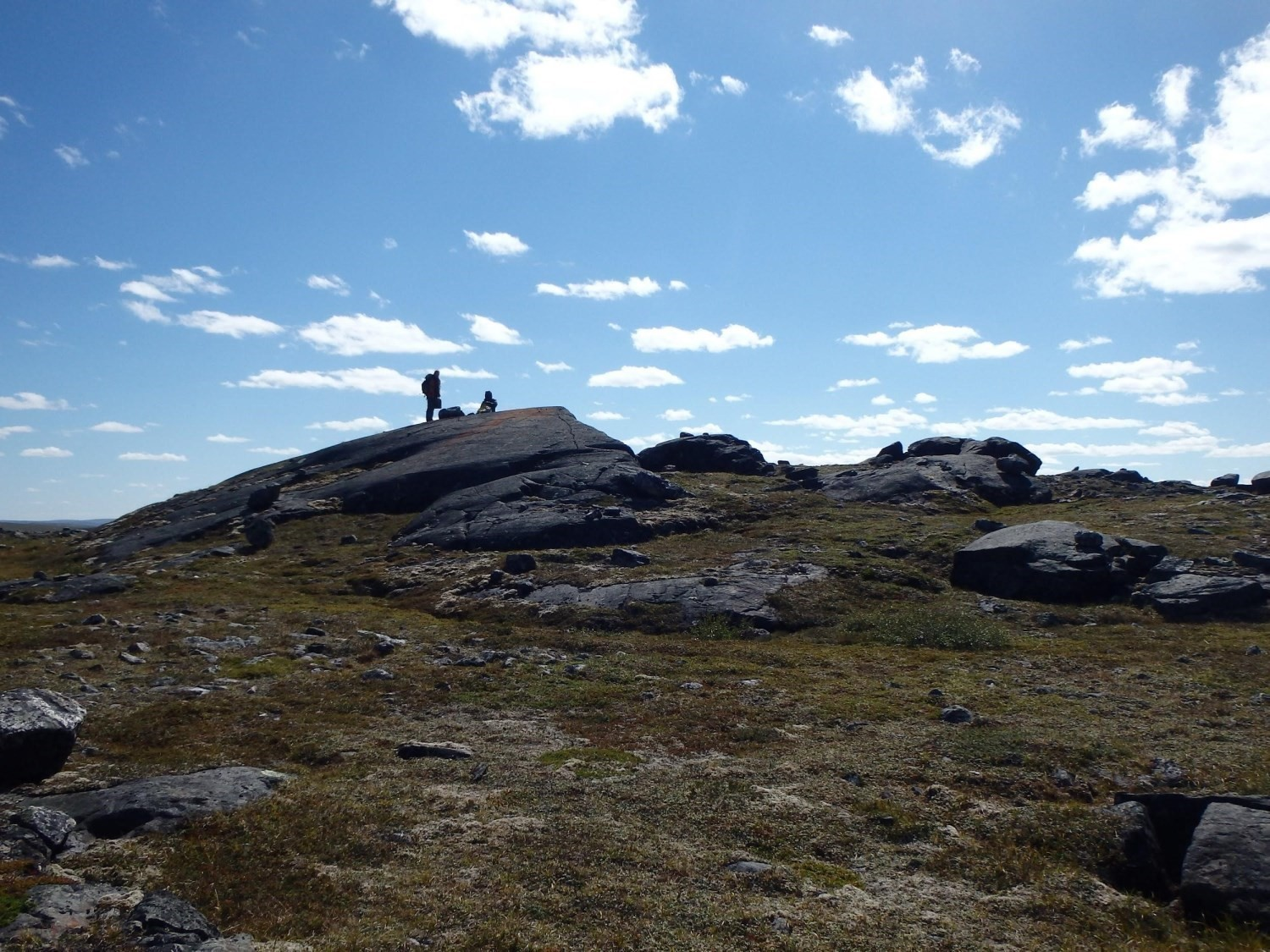Roche moutonnées, a French term meaning “sheep rock,” are distinctive landforms created by the powerful erosive action of glaciers. These streamlined, asymmetrical rock formations are characterized by their smooth, gently sloping upstream faces and steep, rough downstream faces, which resemble the backs of grazing sheep. Roche moutonnées are not only visually striking but also serve as valuable indicators of past glacial activity and ice flow directions, making them essential tools for understanding the Earth’s glacial history and landscape evolution.
In this article, we will explore the top 12 largest roche moutonnées in the world, showcasing their remarkable size, geological significance, and the unique stories they tell about the immense power of glacial erosion. From the vast expanses of the Canadian Shield to the rugged landscapes of Scandinavia and beyond, these landforms offer a fascinating glimpse into the world of glacial geomorphology and the profound impact of ice on our planet’s surface.
Kelleys Island Roche Moutonnée, Ohio, United States

Located on Kelleys Island in Lake Erie, this impressive roche moutonnée is one of the largest and most accessible examples of glacial erosion in the United States. Measuring approximately 400 meters in length and 30 meters in height, the Kelleys Island Roche Moutonnée was formed during the Pleistocene epoch, when the Laurentide Ice Sheet covered much of North America.
The smooth, polished upstream face of the roche moutonnée, composed of resistant Columbus Limestone, contrasts sharply with its steep, fractured downstream face, which was plucked and quarried by the advancing glacier. This striking asymmetry, along with the presence of glacial striations and chattermarks on the rock surface, provides clear evidence of the direction and intensity of past ice flow.
Skaftafell Roche Moutonnée, Iceland

Situated within the Vatnajökull National Park in southeastern Iceland, the Skaftafell Roche Moutonnée is a prime example of glacial erosion in a volcanically active landscape. This massive landform, measuring approximately 500 meters in length and 50 meters in height, was sculpted by the powerful action of the Skaftafellsjökull glacier, an outlet glacier of the larger Vatnajökull ice cap.
The roche moutonnée’s smooth, polished upstream face, composed of basaltic lava flows, bears witness to the abrasive power of glacial ice, while its steep, rough downstream face showcases the effects of plucking and fracturing. The presence of glacial striations and crescentic gouges on the rock surface further attests to the glacier’s former presence and the direction of ice flow.
Votorantim Roche Moutonnée, São Paulo, Brazil
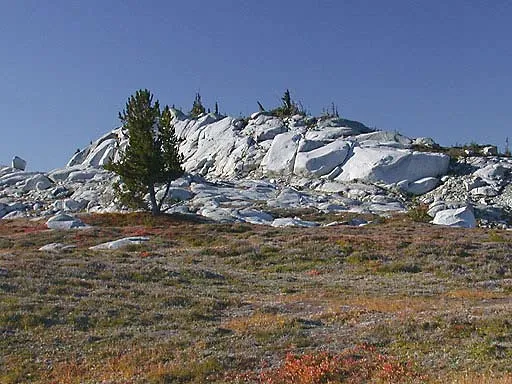
The Votorantim Roche Moutonnée, located in the state of São Paulo, Brazil, is a remarkable example of glacial erosion in a tropical setting. This massive landform, measuring approximately 600 meters in length and 40 meters in height, was formed during the late Paleozoic era, when the Paraná Basin was covered by a vast ice sheet during the Permo-Carboniferous glaciation.
Composed of resistant granite and gneiss, the Votorantim Roche Moutonnée displays a classic asymmetrical profile, with a smooth, gently sloping upstream face and a steep, rough downstream face. The presence of glacial striations and polished surfaces on the rock provides clear evidence of the direction and intensity of past ice flow, making this landform a valuable record of Brazil’s ancient glacial history.
Hättön Roche Moutonnée, Åland Islands, Finland
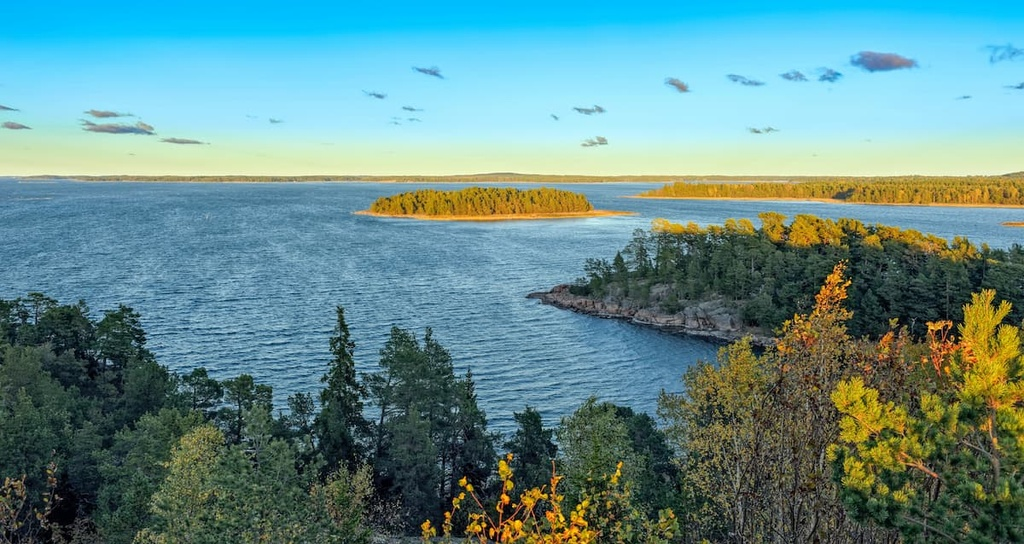
Situated on the island of Hättön in the Åland archipelago, this spectacular roche moutonnée is one of the largest and most well-preserved examples of glacial erosion in Finland. Measuring approximately 400 meters in length and 30 meters in height, the Hättön Roche Moutonnée was formed during the Pleistocene epoch, when the Scandinavian Ice Sheet repeatedly advanced and retreated across the region.
The roche moutonnée’s smooth, polished upstream face, composed of resistant rapakivi granite, contrasts sharply with its steep, fractured downstream face, which was plucked and quarried by the advancing glacier. The presence of glacial striations and chattermarks on the rock surface provides clear evidence of the direction and intensity of past ice flow, making this landform a valuable record of the region’s glacial history.
Järrestad Roche Moutonnée, Skåne, Sweden
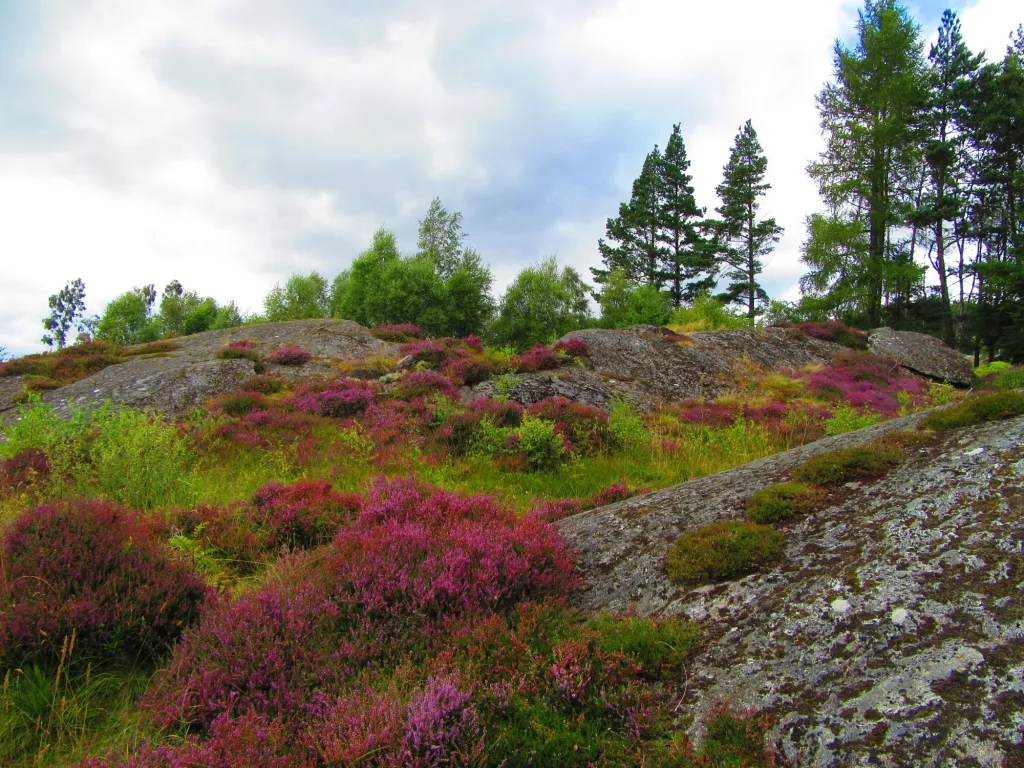
Located in the province of Skåne in southern Sweden, the Järrestad Roche Moutonnée is a prime example of glacial erosion in the Scandinavian landscape. This impressive landform, measuring approximately 500 meters in length and 40 meters in height, was sculpted by the powerful action of the Scandinavian Ice Sheet during the Pleistocene epoch.
Composed of resistant gneiss and granite, the Järrestad Roche Moutonnée displays a classic asymmetrical profile, with a smooth, gently sloping upstream face and a steep, rough downstream face. The presence of glacial striations and polished surfaces on the rock provides clear evidence of the direction and intensity of past ice flow, making this landform a valuable record of Sweden’s glacial history.
Birsay Roche Moutonnée, Orkney Islands, Scotland

Situated on the island of Mainland in the Orkney archipelago, the Birsay Roche Moutonnée is a remarkable example of glacial erosion in a coastal setting. This massive landform, measuring approximately 400 meters in length and 30 meters in height, was formed during the Pleistocene epoch, when the British-Irish Ice Sheet repeatedly advanced and retreated across the region.
Composed of resistant Old Red Sandstone, the Birsay Roche Moutonnée displays a classic asymmetrical profile, with a smooth, gently sloping upstream face and a steep, rough downstream face. The presence of glacial striations and polished surfaces on the rock provides clear evidence of the direction and intensity of past ice flow, making this landform a valuable record of the Orkney Islands’ glacial history.
Askola Roche Moutonnée, Uusimaa, Finland
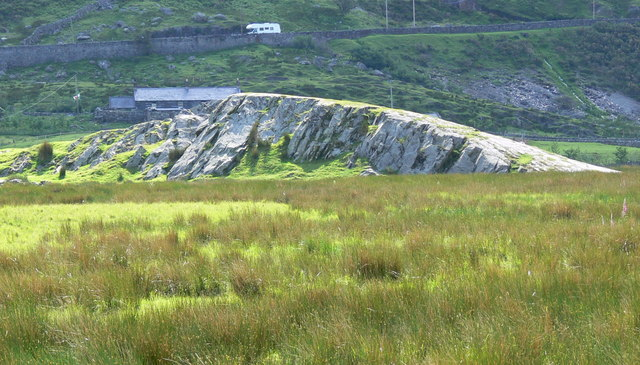
Located in the municipality of Askola in southern Finland, this impressive roche moutonnée is one of the largest and most well-preserved examples of glacial erosion in the region. Measuring approximately 500 meters in length and 40 meters in height, the Askola Roche Moutonnée was formed during the Pleistocene epoch, when the Scandinavian Ice Sheet repeatedly advanced and retreated across the area.
Composed of resistant granite and gneiss, the Askola Roche Moutonnée displays a classic asymmetrical profile, with a smooth, gently sloping upstream face and a steep, rough downstream face. The presence of glacial striations and polished surfaces on the rock provides clear evidence of the direction and intensity of past ice flow, making this landform a valuable record of the region’s glacial history.
Sugarloaf Hill Roche Moutonnée, Nova Scotia, Canada

Situated near the town of Port Mouton in Nova Scotia, Canada, Sugarloaf Hill is a spectacular example of a roche moutonnée formed by the Laurentide Ice Sheet during the Pleistocene epoch. This massive landform, measuring approximately 600 meters in length and 50 meters in height, is composed of resistant granite and displays a classic asymmetrical profile.
The smooth, polished upstream face of Sugarloaf Hill contrasts sharply with its steep, fractured downstream face, which was plucked and quarried by the advancing glacier. The presence of glacial striations and chattermarks on the rock surface provides clear evidence of the direction and intensity of past ice flow, making this landform a valuable record of Nova Scotia’s glacial history.
Blueberry Hill Roche Moutonnée, New Hampshire, United States

Located in the White Mountain National Forest of New Hampshire, Blueberry Hill is an impressive example of a roche moutonnée formed by the Laurentide Ice Sheet during the Pleistocene epoch. This large landform, measuring approximately 400 meters in length and 30 meters in height, is composed of resistant granite and displays a classic asymmetrical profile.
The smooth, gently sloping upstream face of Blueberry Hill bears witness to the abrasive power of glacial ice, while its steep, rough downstream face showcases the effects of plucking and fracturing. The presence of glacial striations and polished surfaces on the rock further attests to the glacier’s former presence and the direction of ice flow, making this landform a valuable record of New Hampshire’s glacial history.
Lemieux Roche Moutonnée, Ontario, Canada

Situated near the town of Eganville in eastern Ontario, Canada, the Lemieux Roche Moutonnée is a prime example of glacial erosion in the Canadian Shield landscape. This massive landform, measuring approximately 500 meters in length and 40 meters in height, was sculpted by the powerful action of the Laurentide Ice Sheet during the Pleistocene epoch.
Composed of resistant gneiss and granite, the Lemieux Roche Moutonnée displays a classic asymmetrical profile, with a smooth, gently sloping upstream face and a steep, rough downstream face. The presence of glacial striations and polished surfaces on the rock provides clear evidence of the direction and intensity of past ice flow, making this landform a valuable record of Ontario’s glacial history.
Savikko Roche Moutonnée, Uusimaa, Finland

Located in the Nuuksio National Park in southern Finland, the Savikko Roche Moutonnée is a remarkable example of glacial erosion in the Baltic Shield landscape. This impressive landform, measuring approximately 400 meters in length and 30 meters in height, was formed during the Pleistocene epoch, when the Scandinavian Ice Sheet repeatedly advanced and retreated across the region.
Composed of resistant granite and gneiss, the Savikko Roche Moutonnée displays a classic asymmetrical profile, with a smooth, gently sloping upstream face and a steep, rough downstream face. The presence of glacial striations and polished surfaces on the rock provides clear evidence of the direction and intensity of past ice flow, making this landform a valuable record of the region’s glacial history.
Lac du Bonnet Roche Moutonnée, Manitoba, Canada

Situated near the town of Lac du Bonnet in southeastern Manitoba, Canada, this impressive roche moutonnée is one of the largest and most well-preserved examples of glacial erosion in the region. Measuring approximately 600 meters in length and 50 meters in height, the Lac du Bonnet Roche Moutonnée was formed during the Pleistocene epoch, when the Laurentide Ice Sheet repeatedly advanced and retreated across the area.
Composed of resistant granite and gneiss, the Lac du Bonnet Roche Moutonnée displays a classic asymmetrical profile, with a smooth, gently sloping upstream face and a steep, rough downstream face. The presence of glacial striations and polished surfaces on the rock provides clear evidence of the direction and intensity of past ice flow, making this landform a valuable record of Manitoba’s glacial history.
Conclusion
The top 12 largest roche moutonnées in the world serve as awe-inspiring testaments to the immense power and sculpting capacity of glacial ice. These distinctive landforms, characterized by their smooth upstream faces and steep downstream faces, offer invaluable insights into the Earth’s glacial history, ice flow dynamics, and the complex interplay between glaciers and the underlying bedrock.
From the vast expanses of the Canadian Shield to the rugged landscapes of Scandinavia and beyond, these roche moutonnées showcase the remarkable diversity and global distribution of glacial erosion features. They not only shape the physical environment but also serve as critical sources of information for understanding past glacial extents, ice flow directions, and the response of landscapes to climate change.
As climate change continues to impact glaciers and ice sheets worldwide, the study of roche moutonnées and other glacial landforms has become increasingly important in reconstructing past glacial environments, predicting future landscape changes, and informing strategies for managing and adapting to the consequences of deglaciation.
Moreover, the top 12 largest roche moutonnées serve as powerful reminders of the need to protect and preserve these unique geological heritage sites. As witnesses to the Earth’s dynamic glacial past and indicators of its future evolution, these landforms inspire a sense of wonder, scientific curiosity, and responsibility towards the natural world.
In conclusion, the top 12 largest roche moutonnées in the world stand as monumental testaments to the awesome power and enduring legacy of glacial erosion. By exploring and studying these remarkable landforms, we gain a deeper appreciation for the complex and interconnected nature of our planet, and the critical role that glaciers have played in shaping its landscapes and influencing its environmental history.

